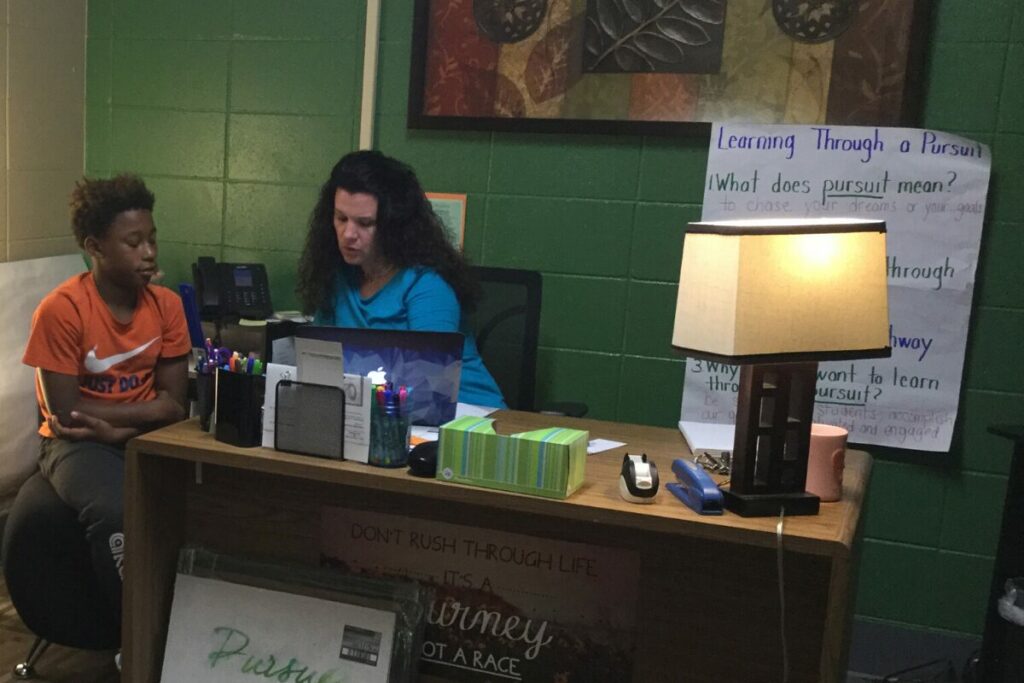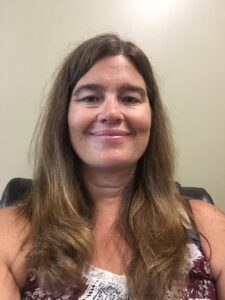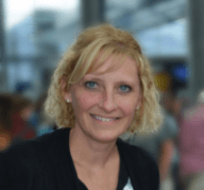During the second week of September, a group of young learners in Mukwonago, WI walked through the doors of Norris Academy for the first time. Some will stay for as little as three months, while others will be enrolled for many years to come. Given this lack of consistency, leaders had to determine what learner-centered structure would provide the greatest impact in the shortest amount of time for every young learner in their community.
In response to this challenge, the Norris team has developed an in-depth, powerful process aimed at developing each learner’s self-understanding at the deepest level. Sharing that deep understanding with others not only builds strong relationships but also increases trust, fosters internal motivation, and creates a learning support network.
At Norris Academy, the more members of a learning network (specialists to write plans and pathways, coaches to support engagement, and community or vocational mentors) who know about a learner’s background, strengths, struggles, learning style, interests, and aspirations, the better learning opportunities can be optimized to meet each learner’s needs—increasing engagement, confidence, and efficacy in learning. And, when a young learner leaves and is unable to take that network with them, they will have cultivated a strong sense of learner agency, empowering them to advocate for their needs at a new learning environment—school-centered or learner-centered notwithstanding—and within a new community.
Norris Academy’s Most Important Principle
Developing a deep self-understanding is among one of the key outcomes of the Norris Academy Macrocosm. Used as a means of framing up the key components of the Norris model, the Macrocosm distinguishes a learner-centric approach to developing agency and leadership at all levels. It includes six interconnected principles that must be considered together to achieve a sustainable and scalable learner-centered environment.
The first principle of the Macrocosm, Learner Profile, is arguably the most powerful and creates the most lasting impact (in the shortest amount of time) on the development of the learner.

The Learner Profile is developed through a learner-led reflective process that is designed to provide an active picture of the learner across multiple dimensions (academic, employability, citizenship, and wellness). The profile each learner creates portrays a vivid picture of who the learner is and who they hope to become. It is used by learners and members of their learning network to co-design relevant, meaningful, and contextualized plans and pathways. The Learner Profile consists of five primary elements—each continually evolving to represent the dynamic development of the learner:
- Becoming a Learner
- Engagement Strategies
- Proficiency Along Competency Continuums
- Urgency Stories
- Who Am I?
The rich complexity of the process can make one’s head spin if they can’t see it happening in action, so we want to bring each element of the process to you by sharing a few stories of young learners who have seen the process through and emerged as excited and motivated learners. And, although we describe each element individually, they are often happening simultaneously throughout a learner’s first 30-45 days at Norris (known as the orientation phase).
Pre-Enrollment Urgency Story (Precursor to the Learner Profile)
Norris Academy serves a diverse population of learners—one-third of whom is enrolled in the residential program, which consists of young learners who have been placed at Norris by the state without much more information than a name and an age. Each of these learner’s bring unique needs from mental health treatment to AODA or even family reunification. For the other two-thirds who enroll by choice, they engage with Norris leaders in developing a Pre-Enrollment Urgency Story—work that occurs before their first official day at Norris Academy. The process includes the young learner and their guardian(s).
The Pre-Enrollment Urgency Story uncovers why a young learner chose to enroll at Norris, what their personal and academic struggles have been up to this point in their lives, what triggers poor behavior or causes the young learner to shut down, achievements they’ve had in the past that they are proud of, and interests they would like to explore.
Gathering these personal details allows Norris leaders to match the learner with a network of support from day one, which can transform a young learner’s relationship with education. A great example of this happened just last year with a young learner who suffered from high anxiety. He wasn’t able to participate in Norris’s Connections Community—an orientation community that gives every new Norris learner the opportunity to connect with their peers and support network. Because of this, Norris leaders structured his integration into the community in a unique way.
The first few days, the young learner was encouraged to come to school for a few hours and meet with his support network, which included a very welcoming peer. Once he was moved to a full-time schedule, he joined adults and a small cohort of his peers in a less socially intimidating environment so they could all continue building trust together. As the young learner’s comfort level increased, he began integrating himself into the larger Connections Community.
Six months into his time at Norris, this young learner grew so confident in his sociability that he participated on a learner panel when Education Reimagined’s Immersive Learning Exchange participants visited Norris. Imagine where this young learner would be had his unique needs not been identified and supported. Rather than showing up as a vocal leader in the community, his anxiety would likely be worse, and his growth would be stagnant or regressing.
Becoming a Learner
For young learners who are ready to jump straight into the Connections Community on day one, cultivating their sense of learner agency begins immediately. Every learner begins their journey of self-discovery on a series of pathways—building from surface-level insights to complex self-awareness deep dives. Each pathway provides young learners the opportunity to discover their strengths and opportunities for improvement within the dimensions of academic, citizenship, employability, and wellness. Through each step of the process, learners discuss their reflections and build relationships with adults and peers within their learning network.
Each activity within these orientation pathways includes intentional conversations of reflection that enable the learner to build trusting relationships with Norris educators and deepen the learner’s sense of self. After one learner took a Citizenship Assessment survey (aimed at providing insight into how the learner sees himself participating as a citizen—actively engaging in the world around them) and a Growth Mindset survey, he made some amazing connections while conferring with his learning specialist.
The learner was able to vocalize that his growth mindset was fixed because he had a lack of self-confidence. In turn, he was able to see that others view him as being unmotivated because, at times, he isn’t sure how to move forward and doesn’t know how to communicate this with the people he is working with. He was afraid to ask questions for fear he would look like a failure. He identified that he could improve this by pushing himself to take chances while contributing to a team pursuit.
In his citizenship survey, he realized he had strong ethical behaviors and solid collaboration skills, but due to his reserved nature and lack of self-confidence, he didn’t always use these skills with his peers. He was always nervous about what others would think of him.
After reflecting on these two surveys, he set a goal to improve his comfort level with contributing to the group and volunteered to lead his group pursuit to build his self-confidence. Through this process, he was able to see relevance to his situation and design a learning trajectory and a goal to work toward.
Engagement Strategies
As young learners venture down their self-paced Becoming a Learner pathways, they simultaneously participate in community circles where they are exposed to the high-level skills and dispositions essential to success within Norris’ four key dimensions of learning: academic, employability, citizenship, and wellness.
Throughout the orientation phase, learners engage in surveys such as multiple intelligences, grit, learning style, learnability quotient, growth mindset, life skills, monitoring of the zone of engagement, and others to spark conversations and deeper reflections about who they are and who they want to become. These discussions all lead to a learner understanding his levels of engagement and the development of a personal engagement plan and strategies.
It’s important to emphasize the high-level nature of these predefined skills and dispositions. It can be tempting to relate to this structure in the same context as conventional standards. The difference is the ownership learner’s feel as they gain deeper understandings within their pathways. One learner began a pathway related to physics, specifically uncovering the physical Laws of Nature. Studying gravitational forces aligned with the learner’s desire to one day become an astrophysicist.
Fueled by this passion, the learner worked with his specialist to take a deeper dive. A learner who was ritualistically compliant at best soon became empowered over his learning. Instead of following a pathway designed under conventional standards, this learner embarked on a journey to understand quantum mechanics through teleconferences with astrophysicists from NASA. This learner’s deep understanding of self allowed him to set goals, co-design pathways and learning experiences, and tap into content experts in order to engage in complex outcomes and optimize learning across the four dimensions.
Proficiency Along Competency Progressions
While at Norris, each learner has learning progressions that track their progress in coursework and across priority competencies. Priority Scales outline the priority competencies all learners will be able to apply at a high level across myriad experiences. To begin this portion of the Learner Profile, learners participate in an online diagnostic assessment in reading and math. The results from these baseline surveys are used to determine a starting point and open up a bank of developmentally appropriate learning goals that may be included in a learner’s pathway.
Competency proficiency is tracked on each learner’s personal graphs to visually represent where the learner is proficient, in progress, and where no evidence has yet been identified. These progressions are then used to determine and align on the next steps in learning pathways and are updated during conferring sessions, where specialists and learners review evidence of learning and determine readiness for next steps. Pathways, progressions, and profiles are updated on a regular basis during coaching and conferring so the learner always has an accurate, up-to-date picture that reflects who they are and where they are aiming to go.
Urgency Stories on Repeat
Urgency Stories are revisited again and again—because who the learner is, where their interests lie, and the circumstances in which they are learning and living are always changing. First, they are revisited after the first two and then four weeks of the academic year. Then, they are explored at the 90- and 120-day marks. Additionally, specific conversations around support alignment are held during the middle and end of each trimester.
The two-week frequency in the early going is essential to discovering needs that exist outside the context of a conventional model. While a learner might think of needs as “I need extra one-on-one academic support from my teacher,” we want to help develop the understanding that “I haven’t had anything to eat in the past 16 hours” is just as relevant of a need to be expressed.
One almost comical, yet very real, example came from a young learner whose conventional IEP recommended he spend 15 minutes on the treadmill twice a day to help regulate his behavior. The Norris staff quickly discovered his behavior would actually turn defensive and argumentative because he was fearful of being told to get on the treadmill. The treadmill wasn’t a solution. It was the trigger itself. We asked if he had chosen the treadmill option while at his previous environment, and he exclaimed, “No! I would have never suggested that.”
Every time the Norris team revisits Urgency Stories with each learner, the young person is present for the conversation. They are given the space to describe what is and is not working for them as a learner. And, they are encouraged to plainly tell the team what is working for them and if they are doing something that is creating a barrier to their learning.
Who Am I?
Throughout the process of building the Learner Profile, learners are connecting to the learning environment and engaging in self-reflection to build relationships and develop a deep understanding of self. This includes identifying engagement strategies, developing comprehensive Plans and Pathways (long and short-term goals with relevant, contextualized learning experiences to achieve those goals), and building confidence to advocate for who they are, who they want to become, how they will get there, and the supports they will need along the way.
This process concludes with the learner presenting their comprehensive Learner Profile during the Who Am I? Presentation to a panel of peers and adults within their learning network. During this presentation, learners share their interests and learning preferences; they advocate for how their peers and the adults in the learning network can support them in being successful in their future learning experiences. This is yet another opportunity to build trust and gain support along their journey.
There have been so many powerful Who Am I? Presentations that it’s nearly impossible for us to choose a single example to feature in this article. However, it’s important for us to give you a taste of what you would experience if you saw the presentations in person.
The Who Am I? Presentation closes the rich introduction to a young person’s learning journey at Norris, and sets the stage for continuous growth ahead.
Johnna Noll and Paula Kaiser
Executive Director and Director of Development
Recently, a young learner invited friends, family, and trusted members of his learning network for his Who Am I? Presentation to celebrate his deepening understanding of self. His support group gathered around as he opened by telling a joke and inviting the audience to view a 30-second commercial about himself.
Quickly, the learner moved into sharing his discoveries about himself in the academic dimension and what type of learner he is. The group learned about his interest in player pianos, his desire to work in quiet places, and the engagement strategies he has learned to employ when he finds learning difficult.
He shared his confidence in his creative writing and preferred methods of research, before talking about his struggle with complex problem solving and the competencies he has selected to help him understand fractions, time, and tempo. The learner then continued to discuss what he has learned about himself in each of the three remaining dimensions: employability, citizenship, and wellness.
He highlighted his enjoyment of singing, dancing, and watching old movies with his family. He unveiled his plans to collaborate with a family friend to restore an old player piano at the community historical society and even shared a video he created while exploring this interest. He detailed for the group how he met with his learning specialist to create a plan and pathway to demonstrate academic and citizenship competencies.
Lastly, he closed by talking about how his support network helped him maintain gainful employment and how he has learned to advocate for himself to plan wellness activities at Norris, such as taking outdoor hikes to study architecture of historical buildings in the area. Throughout his presentation, his invitees asked questions and offered support to his efforts—further bolstering his already heightened self-confidence and assuredness in who he is today and who he wants to become tomorrow.
Just as a learning environment’s vision statement is only as useful as the implementation strategy that follows, the existence of a Learner Profile alone is not nearly enough.
Johnna Noll and Paula Kaiser
Executive Director and Director of Development
As the peak moment of the Learner Profile journey, the Who Am I? Presentation proudly showcases the learner’s development within each of the preceding elements of work—Becoming a Learner, Engagement Strategies, Proficiency Along Competency Continuums, and Urgency Stories. This closes the rich introduction to their learning journey at Norris, and sets the stage for continuous growth ahead.
Together, the five elements of the Learner Profile interact with each other to provide a dynamic visualization of the learner. But, just as a learning environment’s vision statement is only as useful as the implementation strategy that follows, the existence of a Learner Profile alone is not nearly enough.
At Norris Academy, the profile becomes a guide that continuously informs the unique learning plans and pathways for each learner, shows a young learner’s support network how to best engage and co-create relevant and contextualized learning experiences with them, and serves as a reminder to the young learner how much progress they’ve made throughout the year.
This transforms the Learner Profile from a stack of static documents to a powerful and dynamic tool to build learner advocacy, confidence, and efficacy in learning. The Learner Profile creation process organically builds trusting relationships, expanding networks, and a habit of self-reflection and growth. As learners of all ages embark on their learning journeys beyond the orientation phase, they are driven to become the next best version of themselves. Who wouldn’t want that outcome?


